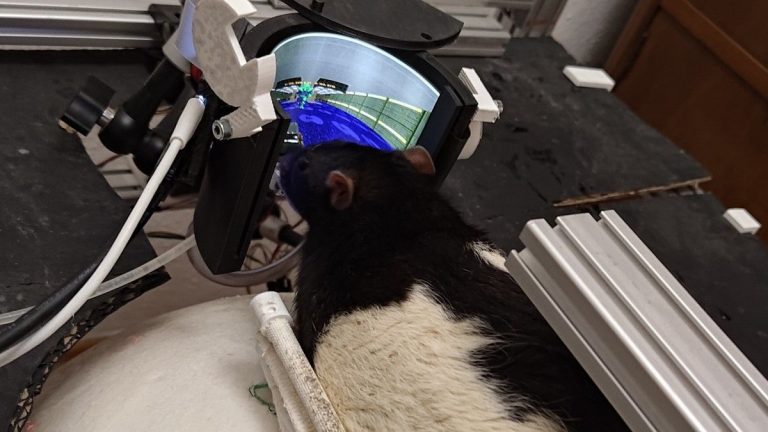Imagine wandering through an exhibition of artistic textiles and stumbling across a Navajo rug that looked for all the world like an Intel CPU. Well, that’s exactly what happened to computer historian Ken Shirriff as he recently sauntered through the National Gallery of Art in Washington D.C.
Could this be a fabulously improbable case of art unintentionally imitating life? As Shirriff observes, the similarity between high level integrated circuit design and Navajo designs had been noted since the 1960s.
So, what, exactly, was going on? Could a Navajo weaver from centuries ago have somehow channelled circuit design from centuries hence? Was it just an incredible fluke?
The first clue is that the rug differs from traditional designs in not being symmetrical. Turns out, the wool weaving was a piece commissioned by Intel in the 1990s for the the American Indian Science & Engineering Society.
The weaving was based on a die shot of the original Intel Pentium processor from the early 90s containing around three million transistors and fabbed using a 500nm process.
Shirriff has posted images of the rug (via Techspot) alongside die shots of the chip itself, and the resemblance is startling. Indeed, Shirriff reckons the wool weave is accurate enough, “that each region can be marked with its corresponding function in the real chip.” So, he did just that.
Originally built on the 500nm node, Marilou Schultz’s 1994 weave of the Intel Pentium chip is made from natural wool. (Image credit: Ken Shirriff)
It’s also sufficiently detailed to be able to identify it as the 1994 “P54C” revision of the OG P5 Pentium of 1993. For the record, the piece was woven in 1994 by Marilou Schultz, a Navajo/Diné weaver and math teacher.
The design also seemed to differ from the original chip layout in being a mirror image. But as it happens, the weave is actually reversible with no true front or back. Shirriff realised that the The National Gallery had simply displayed the piece the wrong way round.
(Image credit: Future)
Best CPU for gaming: The top chips from Intel and AMD.
Best gaming motherboard: The right boards.
Best graphics card: Your perfect pixel-pusher awaits.
Best SSD for gaming: Get into the game ahead of the rest.
“This probably bothers nobody but me, but I hope the gallery will correct this in future exhibits,” he says. No, Ken, it agitates our OCD, too.
Unfortunately, if you fancy goggling at the rather pleasing rug and its remarkably on-point rendition of a Pentium processor, it’s no longer on display, having been part of the Woven Histories: Textiles and Modern Abstraction exhibit at the Gallery that ran until late July.
It’s not known if the piece is due to be displayed again any time soon.












